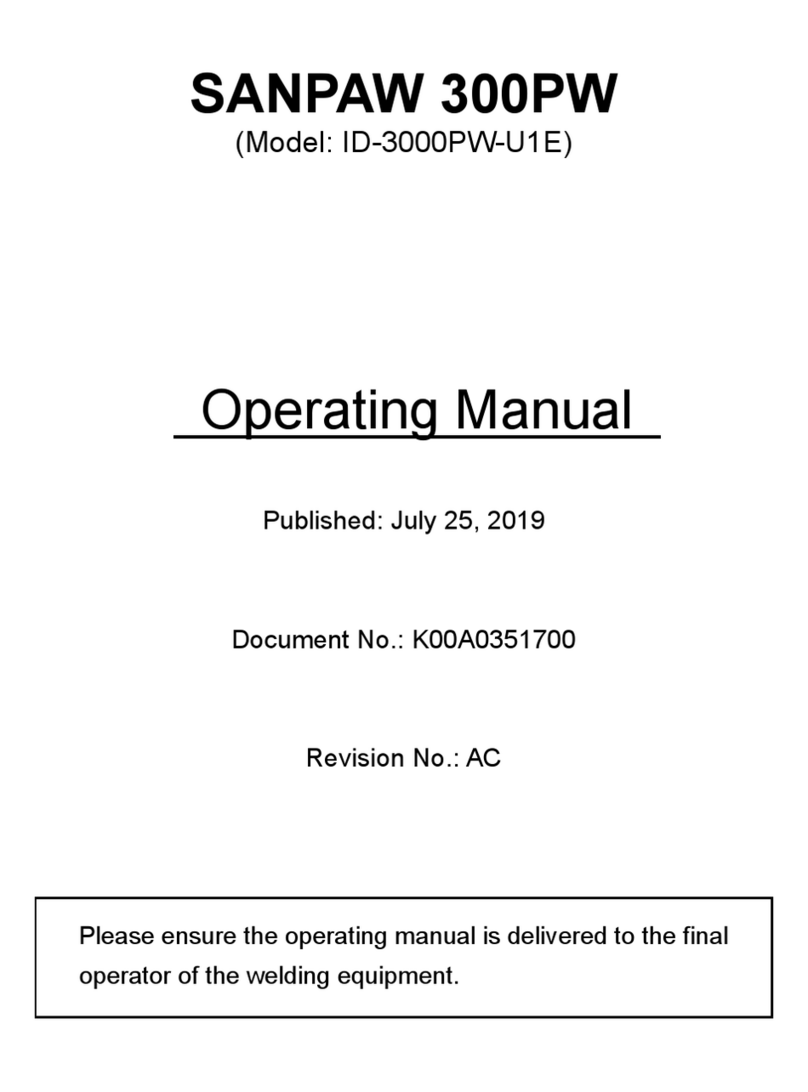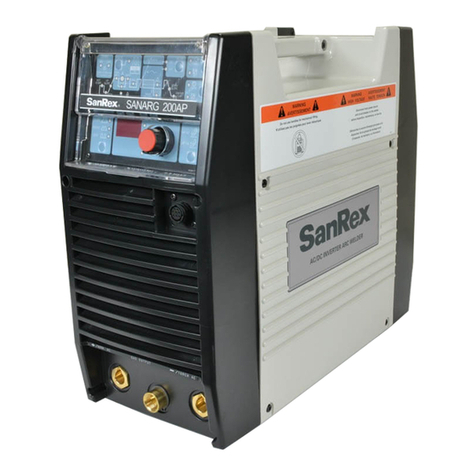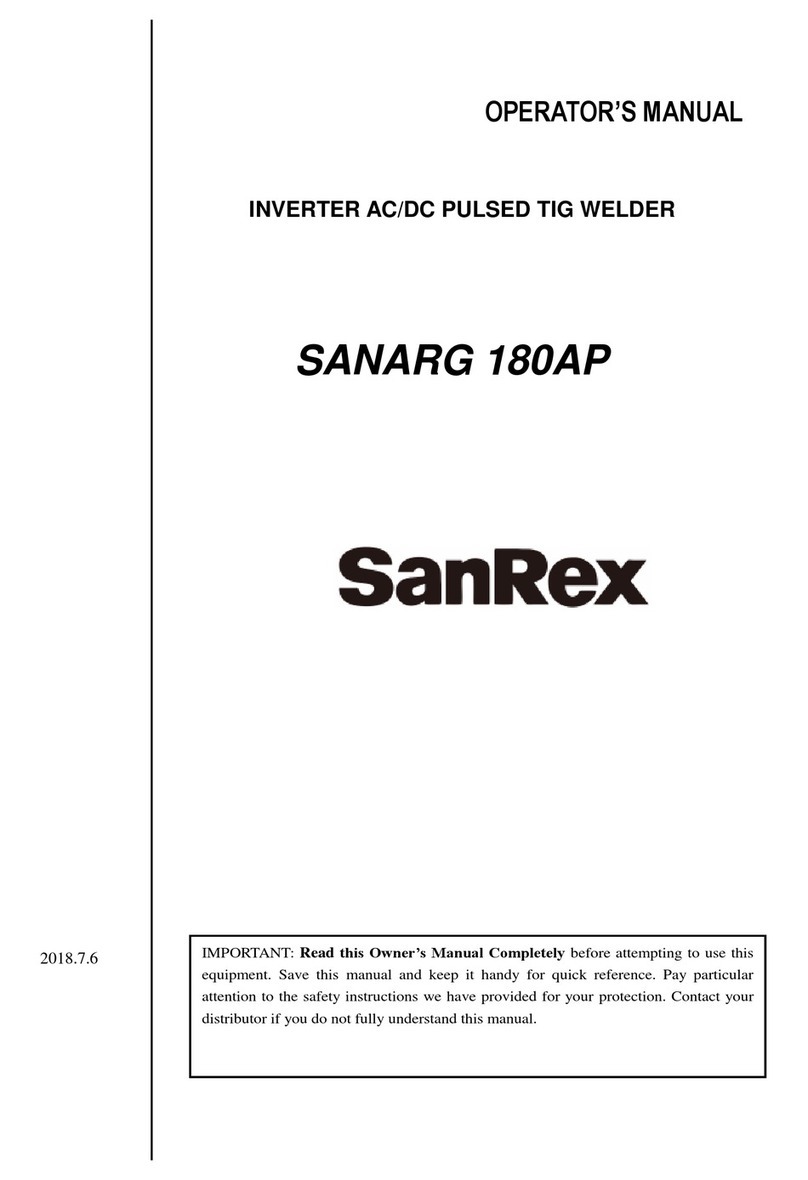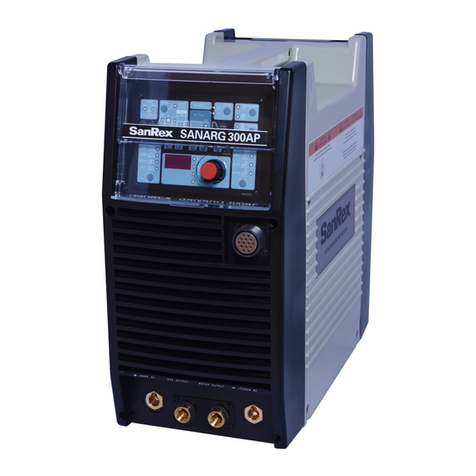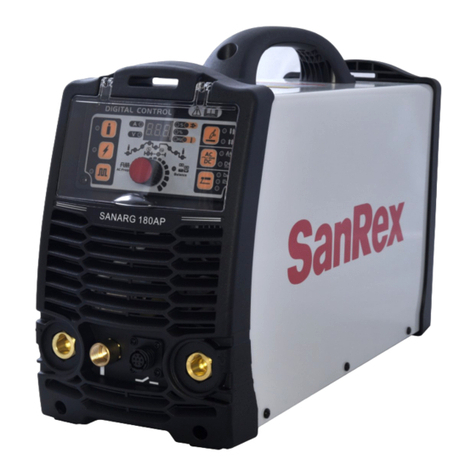Table of Contents
1.0 SAFETY REGULATIONS AND REQUIREMENTS............................................................. 9
1.1 NOTES, CAUTIONS AND WARNING ANNOTATIONS................................................. 9
1.2 SAFETY RECOMMENDATIONS..................................................................................... 10
1.3 WELDING SYMBOLS ....................................................................................................... 11
1.3.1 SAFETY SYMBOL LEGEND..................................................................................... 11
1.3.2 GRAPHIC SYMBOL LEGEND .................................................................................. 15
1.4 SAFETY PRECAUTIONS................................................................................................. 16
1.5 SAFE OPERATION OF THE WELDER AND PERSONAL PROTECTION................... 17
1.5.1 IMPORTANT SAFETY PRECAUTIONS.................................................................. 17
1.5.2 ELECTRIC SHOCK............................................................................................................ 18
1.5.3 GASES AND FUMES.................................................................................................. 19
1.5.4 FIRE AND EXPLOSIONS........................................................................................... 20
1.5.5 ARC WELDING RAYS, NOISE AND SPATTER OR SLAG................................... 21
1.5.6 GAS CYLINDERS....................................................................................................... 22
1.6 REFERENCE PUBLICATIONS......................................................................................... 23
2.0 INTRODUCTION AND DESCRIPTION.............................................................................. 25
2.1 GENERAL........................................................................................................................... 25
2.2 WELDING MACHINE DESCRIPTION............................................................................. 25
2.3 160P POWER SOURCE FEATURES................................................................................. 25
2.4 WELDING OUTPUT VOLTAGE AND AMPERAGE CURVES..................................... 27
2.4.1 160P V/A OUTPUT CURVES..................................................................................... 27
2.5 FUNCTIONAL BLOCK DIAGRAM.................................................................................. 28
3.0 INSTALLATION RECOMMENDATIONS.......................................................................... 29
3.1 TRANSPORTATION METHODS...................................................................................... 29
3.2 ENVIRONMENT................................................................................................................. 30
3.3 MACHINE GROUNDING & HIGH FREQUENCY INTERFERENCE ........................... 30
3.3.1 GROUNDING .............................................................................................................. 30
3.3.2 HIGH FREQUENCY INTRODUCTION .................................................................... 30
3.3.3 HIGH FREQUENCY INTERFERENCE..................................................................... 31
3.4 LOCATION ......................................................................................................................... 32
3.5 ELECTRICAL INPUT CONNECTIONS & REQUIREMENTS ....................................... 32
3.5.1 INPUT POWER............................................................................................................ 32
3.5.1.1 160P Input Power.......................................................Error! Bookmark not defined.
3.5.2 FUSING........................................................................................................................ 33
3.5.3 ELECTRICAL INPUT CONNECTIONS.................................................................... 34
3.5.3.1 160P Input Power Connections...................................................................................... 34
3.6 SPECIFICATIONS.............................................................................................................. 36
3.7 DUTY CYCLE..................................................................................................................... 37
4.0 OPERATOR CONTROLS, DIMENSIONS & OUTLINE.................................................... 39
4.1 DIMENSIONS AND OUTLINE......................................................................................... 39
4.2 OPERATOR CONTROLS, LOCATION AND FUNCTIONALITY ................................. 40
4.3 8-PIN REMOTE CONTROL RECEPTACLE .................................................................... 42
4.4 PARAMETER DISPLAY PANEL...................................................................................... 43
4.5 FUNCTION SELECTION................................................................................................... 45
4.6 PARAMETER SELECTION............................................................................................... 46
5.0 SET-UP FOR BASIC STICK (SMAW) AND TIG (GTAW) WELDING............................ 48
6.0 SEQUENCE OF OPERATION.............................................................................................. 49
6.1 STICK WELDING............................................................................................................... 50






